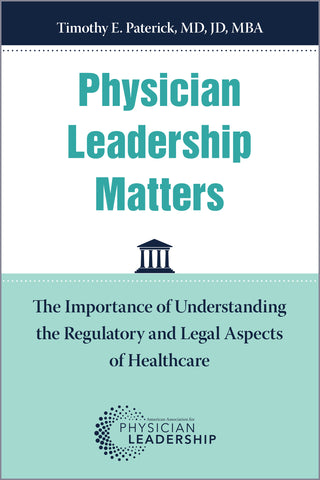Related Products
Private Equity and Healthcare: Leadership, Economics, and Trends for the Future
Books
Soft Cover
$46
Members save 15%
The Chief Medical Officer’s Financial Primer: The Vital Handbook for Physician Executives
Books
Soft Cover
06/30
$42
Members save 15%
Working Happy! How to Survive Burnout and Find Your Work/Life Synergy in the Healthcare Industry
Books
Soft Cover
$32
Members save 15%
Inspiring Growth and Leadership in Medical Careers: Transform Healthcare as a Physician Leader
Books
$23
Members save 15%
Fast Forward Thinking: 40 Rules for Entrepreneurs and Investors in Medical, Science, and Biotech
Books
Soft Cover
$84
Members save 15%
The Catholic Church and Its Hospitals: A Marriage Made in Heaven?
Books
Soft Cover
$59
Members save 15%
Every Story Counts: Exploring Contemporary Practice Through Narrative Medicine
Books
Soft Cover
$34
Members save 15%
Physician Leadership Matters: The Importance of Understanding the Regulatory and Legal Aspects of Healthcare
Books
$42
Members save 15%
Next-Level Healthcare Employees: Improving the Performance of a Good Team
Books
Soft Cover
06/30
$48
Members save 15%













